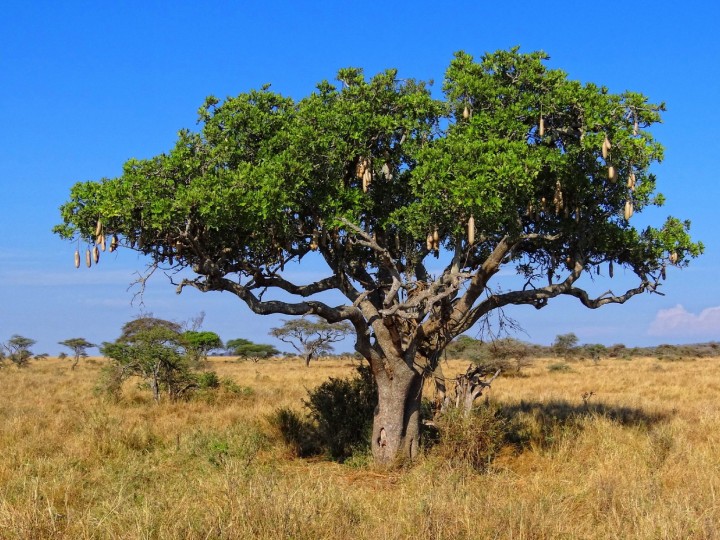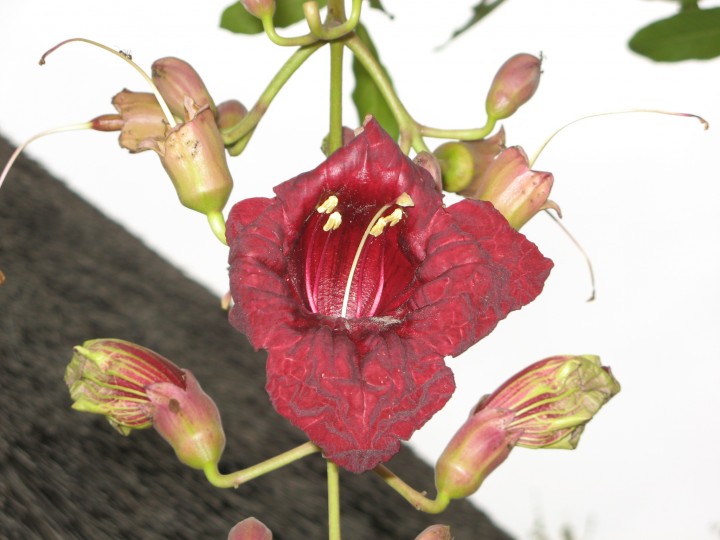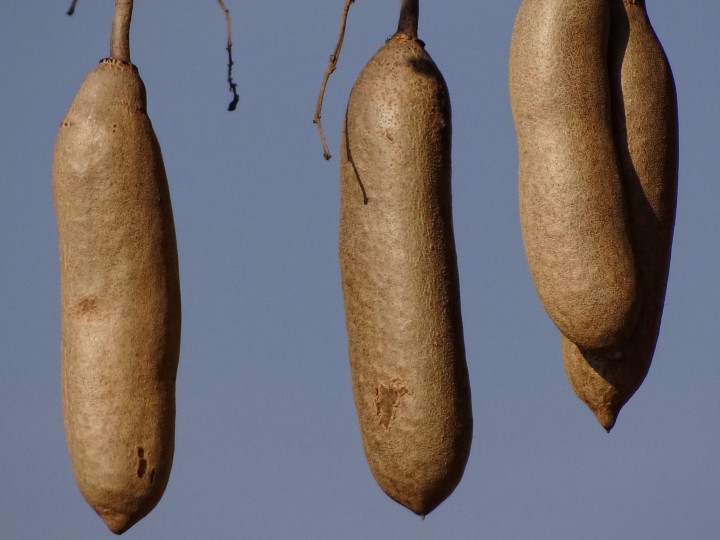Sausage Tree - Kigelia africana
Posted 30.06.2017 by Team Ecofund - View commentsDescription
According to its scientific name, Kigelia africana, the sausage tree is a species of the Bignoniaceae family and of the Kigelia genus. Named Nilimbankote in Diola, the sausage tree is native to Senegal and can also be found in the Sudanese and Guinean forests and savannahs. This tree adapts to its environment in a most remarkable way: for example, it needs another sausage tree nearby to grow its fruit. Also, the seeds borne by the very hard fruit cannot germinate unless they are first consumed and then defecated by an animal. Bats contribute to the pollination of the flowers, which open only at night, when they also release a foul odour. Because the propagation of the sausage tree happens in perfect symbiosis with the surrounding flora and fauna, the tree is very sensitive to changes in its ecosystem.
Uses
The big, brown and fibrous fruit is seldom used as food, although it is sometimes cooked and eaten by local populations. However, its properties are well known and used in alternative medicine. The pulp of the fruit is used to firm the skin of women’s breasts, thanks to extracts called flavonoids. The dried fruit and the bark are used for their anti-inflammatory properties. The bark has even more virtues: it cures snakebites and toothache.
Caution: the green fruit is toxic!
Did you know…
The fruit of the sausage tree is used by the Diola countrymen to protect their anti-salt dams from aquatic animal species. The odour of the fruit when thrown in the water is so strong that it repels these animals.




